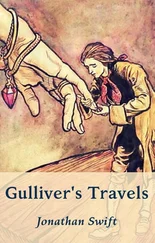A closer examination revealed a number of slit-like cuts in the material of the raincoat, running across the back of the body and between the shoulders, and one, similar cut, to the back of the head. Dark stains around the cuts of the material gave an overall appearance of stab wounds with slight blood-staining of the coat’s material. The exposed parts of the body – the left hand and thighs – were not blood-stained, save for a single smear of blood approximately two inches (five centimetres) in diameter on the upper surface of the left thigh. There was blood soiling of the grassed area some three inches (seven centimetres) in diameter below the body, approximately one foot (thirty centimetres) beyond the lower end of the trunk. Behind the right side of the child’s back lay an unzipped purple purse, and for a moment the thought entered many minds, ‘Has this child been murdered for the sake of the meagre contents of her purse?’ The body and clothing appeared not to have been disturbed since the child’s death, but that did not prevent there being a collective theory that the motive for this crime had been sexual, not financial.
Then, for the first time since hands had taken her life from her, Lesley Molseed is touched again, but this time it is by people who care about her, at least in the sense of being anxious to help bring her killer to justice. They are gentle, not violent, deliberate, not frenzied, and they are painfully experienced in the performance of their various tasks. With minimum conversation they go about their macabre but necessary business. Detective Sergeant Kenneth Godfrey has been appointed exhibits officer, responsible for the collection, collation and identification of every single item of physical evidence, whether seized by a scientist or police officer, whether taken from a witness or, in due course, a suspect. He receives the Tweety Pie-crested handbag and the purple purse, and places each into a separate polythene bag which is then sealed and labelled: a description of the item, the time, date and place of recovery and a unique reference number which relates to the person who recovered it. The items will remain protected in their polythene sheath until the time comes for forensic examination in the sterile atmosphere of the laboratory.
Sellotape lifts are taken from the child’s left hand and legs, the simplest of tools to search for the tiniest fragment of evidence. A fragment of blue material is found stuck to the back of the left thigh.
Then, and only then, does Professor Gee begin to intrude on the body itself. He first removed the child’s knickers. They did not appear to have been tampered with, giving at least an indication that there had been no sexual interference. Then the professor took anal and vaginal swabs, which were placed in exhibit tubes and handed to the exhibits officer.
To assist in determining the time of death, Professor Gee took the rectal temperature of the body. At 12.30 p.m. it was 46 degrees fahrenheit. The examination had by now taken over two hours, and though the weather was dry, there was a cold westerly wind blowing. The air temperature on the ground varied between 52 and 48 degrees fahrenheit, whilst the temperature three feet above the body varied between 47 and 48 degrees fahrenheit. Although the ground appeared to be dry, the upper clothing of the deceased was slightly damp, and a few beads of moisture had been visible on the upper surface of the raincoat when the men had first arrived at the body, but these had quickly disappeared due to the effects of the wind. The sky, which had been clear at the beginning of the examination, was now starting to cloud over.
Now, finally, the child could be removed from the exposed grass bank. With reverence and respect – and doubtless with thoughts of their own children and grandchildren never far away – the assembly of men watched Lesley Molseed as she was lifted on to a black polythene sheet. As her body was lifted, it was evident that rigor mortis was well developed in the limbs, although hypostasis 1was only faint. As Lesley was turned, they saw that she had bled from the nose and her facial features were distorted and flattened from their prolonged contact with the ground. There was no blood soiling at the back of the head, nor of the fleecy white lining of the interior of the hood of her raincoat. A small cut was visible to the left of the front of the raincoat, and there was a stab wound beneath. The front of the child’s clothing was heavily blood-stained, as was that which covered the back of her shoulders, where blood had seeped into the right-hand side of the clothing due to the position in which the body had lain. These early indications lead to a hypothesis that Lesley had been repeatedly stabbed where she lay, and left to bleed to death. She had been alive when brought to this desolate place, and her life had ebbed away in lonely isolation, her screams only partially drowned by the high-pitched whistling of the winds which swirled through the peaks and vales of the moors.
Then she had been left. The skin over the left hand was macerated, being sodden, white and wrinkled. The skin of the lower limbs was slightly grey, and a few fly eggs were found in the hair close to the left ear. These features, and the rectal temperature, indicated that the body had been exposed to the elements for some time, although a more precise time of death would only become clear after the post-mortem, and a more careful analysis of the temperature readings already taken.
After Lesley’s hands and feet were encased in plastic bags to preserve any evidence which might cling to them, the black sheet was wrapped around the body, which was then placed into a coffin-shell and carried off the bleak moors with solemnity and dignity. Whatever vehicle had carried her on her last journey in life, she was now to be moved by a hearse which was waiting in the lay-by below. Her next journey led to the Halifax Royal Infirmary.
Removed from the wind and rain of the moor to the hospital mortuary, the child is received by Mr Seward, the mortuary attendant. He is experienced, and treats each corpse given to his charge with equal care and reverence. But his experience extends to victims of crime and, knowing that this child was said to be such a victim, he is instantly aware that his care of the body must extend beyond the norm. He knows from previous post-mortems in murder cases that the body is itself a source of evidence, and that whilst he must prepare the body for viewing by the relatives, so as to cause as little distress as possible, he has a second, but equally important, role in ensuring that any movement of the body will not contaminate or cause the loss of any evidence. These dual roles clashed at this point: whilst he had previously prepared bodies with extensive head or facial injuries so as to minimise the trauma to the relatives carrying out the identification, he was unable to do so with Lesley, whose face, although uninjured, was heavily stained with blood. That blood-staining would doubtless be of concern to the scientists, and so the best Mr Seward was able to do was to lay her body out in the black plastic sheet, now covered with a purple velvet cloth.
Mr Seward was assisted by Sergeant Appleyard, the coroner’s officer, who performs a number of functions for the coroner. One such function is to ensure that an accurate identification of the deceased has taken place at an early stage. And so, the child is identified. April Molseed is brought by police officers to Halifax, the journey littered with her questions which those officers were unable to answer: were they sure it was Lesley? How had she died? Had she been sexually assaulted? These officers do not have the answers. Indeed, at this point, no one does.
Now Lesley is left to the scientists. Now is the white, sterile phase. The tiny child reduced to ‘the deceased’ whilst the cause of her death is sought. A grim and gruesome task in any case, made the more pitiful by the victim’s age. A necessity, both for the detection of the criminal and for his prosecution, to know that she did not die from natural causes, to know the nature of the attack, the number of wounds and of blows, to know (if possible) the time and place of death, to know whether there has been indecent interference. Mercifully not. To draw from the child any clue which may yet help justice to be done.
Читать дальше











